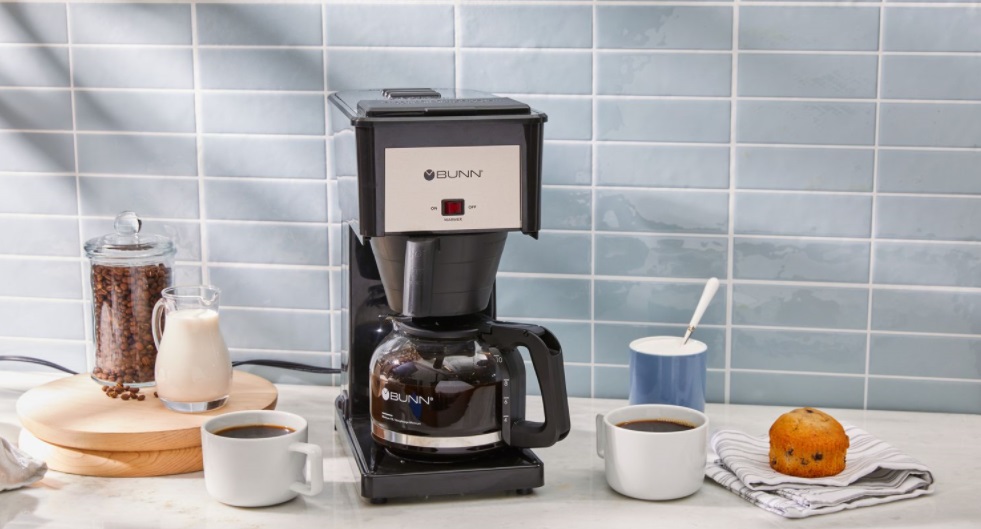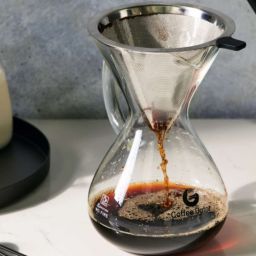
Drip coffee, a staple in many households and coffee shops, has the potential to be a delightful experience with each sip. However, not all drip coffee tastes the same; the key to a better-tasting brew lies in a few crucial details. This article will guide you through various expert tips and practical advice aimed at enhancing the flavor of your drip coffee.
Whether you’re a seasoned coffee lover or a beginner looking to improve your morning brew, these insights will help you achieve a more satisfying coffee experience.
Key Takeaways
- Use Fresh, High-Quality Coffee Beans: The freshness of your coffee beans is critical. Opt for whole beans and grind them just before brewing.
- Correct Water Temperature Is Crucial: Aim for a water temperature between 195 to 205 degrees Fahrenheit to extract the best flavor.
- Regular Maintenance of Coffee Machines: Keep your coffee maker clean and descaled to ensure the best tasting coffee.
- Mind the Coffee-to-Water Ratio: Generally, a ratio of 1:15 (coffee to water) works well for a balanced brew.
- Experiment with Different Roasts: Light, medium, and dark roasts can dramatically alter the flavor of your coffee.
Choosing Quality Coffee Beans
The choice of coffee beans can make or break your drip coffee. Always look for high-quality, freshly roasted beans. Coffee beans are best used within a month of their roast date to ensure they retain their flavor and aroma. Roast types also play a pivotal role:
- Light Roasts: Ideal for those who appreciate subtle, complex flavors in coffee.
- Medium Roasts: Offer a balance of acidity and body, suitable for those who enjoy a smoother, more balanced flavor.
- Dark Roasts: Known for their bold, robust flavors, these are perfect if you love a rich, intense coffee.
Optimizing Water Quality and Temperature
The quality of water and its temperature are crucial for brewing the perfect cup of drip coffee. Start by using clean, filtered water to avoid any unwanted flavors from chlorine or other chemicals commonly found in tap water. As for the temperature, aim to keep your water between 195 and 205 degrees Fahrenheit.
This range is ideal for extracting the full flavor from the coffee beans without burning them, which can lead to a bitter taste. Ensuring your water is at the right temperature can make a significant difference in the quality of your coffee.
Perfecting the Coffee-to-Water Ratio
Achieving the right coffee-to-water ratio is key to brewing a great cup of drip coffee. A general guideline is to use 1 gram of coffee for every 15 to 17 grams of water. To get this ratio just right, use a digital scale.
This will help you measure your ingredients accurately, ensuring consistent strength and flavor in every brew. Experimenting within this range can help you find the perfect balance according to your personal taste preference.
Grinding Coffee Beans Properly
The grind size of your coffee beans is vital for proper flavor extraction. If your coffee is too fine, it can be over-extracted and taste bitter; if it’s too coarse, it might be under-extracted and weak. For drip coffee, aim for a medium grind, similar to the texture of sea salt. Using a burr grinder is recommended because it provides a more consistent grind compared to a blade grinder.
Consistency in grind size leads to even extraction during brewing, which is crucial for achieving a smooth and flavorful cup of coffee.
Brewing Techniques and Modifications
Enhancing your drip coffee can be as simple as tweaking your brewing technique. Pre-infusion, or the bloom process, is a great start. This involves pouring a small amount of hot water over the grounds to let them “bloom” before beginning the full brew cycle. This step releases any trapped gases in the grounds, leading to a smoother flavor profile.
Most advanced coffee makers have a pre-infusion feature, but you can also manually bloom your coffee in a drip machine by pausing the brew cycle just after adding a little water, waiting 30 seconds, and then continuing.
Machine Maintenance and Cleaning
Keeping your coffee maker clean is essential for brewing tasty coffee. Start with a daily rinse of the removable parts, like the carafe and filter basket, using warm soapy water. For a deeper clean, descale your machine monthly to remove mineral buildup. Mix equal parts white vinegar and water, pour it into the water reservoir, and run a brewing cycle.
Follow this with a few cycles of just water to rinse any vinegar residue. Regular maintenance not only improves the taste but also extends the life of your coffee maker.
Flavor Enhancements and Custom Recipes
To personalize your drip coffee, consider experimenting with various flavor enhancements. Adding a pinch of cinnamon or nutmeg to the coffee grounds can infuse a delightful spice note. For a sweeter touch, try vanilla extract or a drizzle of caramel syrup.
If you prefer artisan flavors, adjust your coffee grind size to alter the extraction rate—finer grinds for a more intense flavor or coarser grinds for a lighter cup. These simple adjustments allow you to tailor your coffee to your preferred taste, making each cup uniquely satisfying.
FAQs
What are the best filters to use for drip coffee? Choosing the right filter can affect the taste of your drip coffee. Paper filters are great for a cleaner cup, removing most oils and fine coffee particles. Metal filters allow more oils to pass through, giving the coffee a richer flavor. The choice depends on your taste preference—cleaner or fuller-bodied.
Is blooming necessary for making good drip coffee? Blooming is the process of pre-wetting coffee grounds before brewing. It’s not essential, but it can enhance your coffee by allowing gases to escape and promoting a more even extraction. This results in a smoother cup of coffee, especially with fresh, high-quality beans.
Do different drip coffee makers impact the taste of coffee? Yes, different drip coffee makers can vary in how they brew coffee, which affects the taste. Machines with better temperature control and pre-infusion settings can improve flavor extraction, leading to a better-tasting cup. Experiment with various machines to find one that suits your brewing style and flavor preferences.
Final Thoughts
Making great drip coffee at home is straightforward once you understand the key elements: using fresh beans, the right water temperature, and proper machine maintenance. By experimenting with brewing techniques like blooming and playing with flavor enhancements such as spices or syrups, you can elevate your daily coffee ritual. Remember, small tweaks can make a significant impact, ensuring every cup is just the way you like it.









